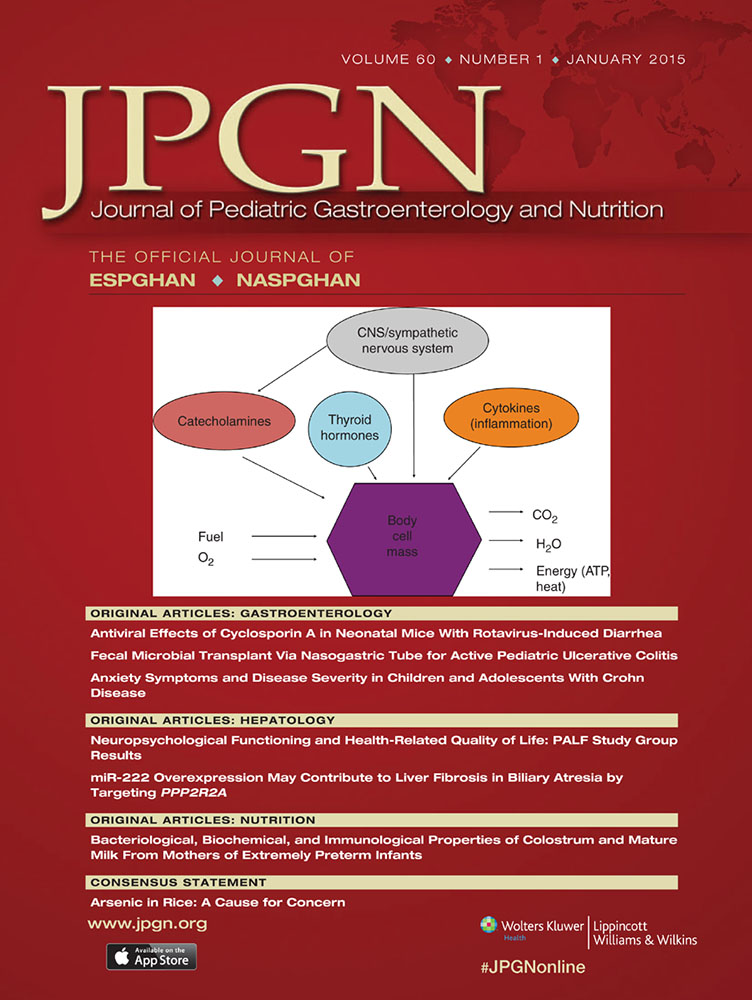miR-222 Overexpression May Contribute to Liver Fibrosis in Biliary Atresia by Targeting PPP2R2A
Drs Dong and Zheng contributed equally to the article and are co-first authors.
Supplemental digital content is available for this article. Direct URL citations appear in the printed text, and links to the digital files are provided in the HTML text of this article on the journal's Web site (www.jpgn.org).
This study received financial support from the National Natural Science Foundation of China (nos. 30973139, 81370472, and 81300517), and the Science Foundation of Shanghai (nos. 11JC1401300 and 13ZR1451800).
The authors report no conflicts of interest.
ABSTRACT
Objective:
Biliary atresia (BA) is a devastating liver disease in infants. Progressive hepatic fibrosis is often observed in postoperative patients with BA even after a successful Kasai portoenterostomy procedure. MicroRNA-222 (miRNA) has been linked to the activation of stellate cells and the progression of liver fibrosis.
Methods:
In this study, the miR-222 expression profile in BA and infants with anicteric choledochal cyst (CC) was determined. The functional effect of miR-222 inhibition on the growth of the human hepatic stellate cell line LX-2 was also evaluated. The downstream signaling pathways and target of miR-222 were determined by coupling gene expression profiling and pathway analysis and by in silico prediction, respectively. In addition, we demonstrated miR-222 overexpression in patients with BA compared with choledochal cyst controls.
Results:
Inhibition of miR-222 in the LX-2 cell line significantly decreased cell proliferation. We also identified protein phosphatase 2A subunit B as a target of miR-222. The downstream signaling pathway, Akt, was also influenced by miR-222. A consistent reduction of Akt phosphorylation and Ki67 in the LX-2 line was shown following miR-222 suppression.
Conclusions:
Our results show that miR-222 overexpression is common in BA and contributes to LX-2 cell proliferation by targeting protein phosphatase 2A subunit B and Akt signaling.




